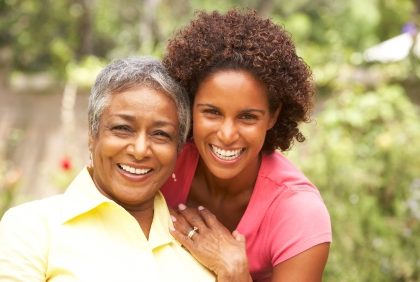If you are concerned about elderly safety—whether your own or someone else’s—there are a number of precautions you can take to significantly lessen the risks of a potentially dangerous fall. As we age, we may find it increasingly difficult to get around our home, making it necessary to make adjustments and additions to increase safety. Many of these “helpers” can be installed on your own–even if you’re only marginally handy–while more extensive aids may require the services of a contractor or handyman in the senior home.
Statistics on Elderly Safety—Who is at Risk?
Falling down is the primary cause of both fatal and non-fatal injuries to the senior population in the United States. A staggering one out of every three seniors falls each year – more than 11.5 million. Statistics show that older women are at the highest risk, as are those seniors who are currently unable to balance on one leg for a period of more than five seconds. Seniors who use multiple prescriptions as well as OTC drugs (most seniors) should be especially concerned about elderly safety and falls.
If you are a senior who lives alone, you must take elderly safety very seriously. Your risk increases when living alone, as you could fall and not be found for a period of time, making a fall a life threatening injury. Falls can occur at any time of the day, while doing a wide variety of everyday activities, although some, such as going up and down stairs or getting in and out of the tub or shower, do have a higher rate of injury. Maintaining elderly safety simply takes some forethought and effort on your part.
Over 60% of falls happen at home, another 30% while the senior is out and about in their community or neighborhood, and the remaining 10% will typically take place in a nursing home or other senior housing facility. Nearly half of all older adults who require hospitalization following a hip fracture will not only end up staying nearly twice as long in the hospital as seniors hospitalized for other reasons, but will also require nursing home admission during their recovery—a prime reason to make elderly safety a high priority.
Elderly Safety and Fall Prevention
Because a fall can be a life-altering event, effectively restricting your freedom of movement and ability to remain independent, it’s extremely important that you eliminate all trip hazards in your home by installing safety devices where necessary. Installing grab bars throughout your home is one good way to prevent a fall. Grab bars are critical in the shower, tub and toilet area, as well as next to your bed. If you have stairs, make sure you have a solid railing to hold on to when going up or down.
Wearing shoes with non-skid soles is a good way to prevent falls—house slippers, while comfortable, are not effective in preventing falls and may actually cause them. Use night lights where needed and make sure your home is well-lit so you can easily see a trip hazard. Throw rugs, while attractive, are at the top of the list of trip hazards, so either use carpet tape to keep them in place, or do away with them all together. Finally, make sure there are no electrical cords across traffic areas and no uneven floor heights from room to room.
Elderly safety can be increased by getting consistent, reasonable amounts of physical activity which can increase and sustain your strength, coordination, agility and balance. Regular walks can accomplish all of these things, lessening your chance of falling. Have your eyes checked every year for vision changes, and see your doctor if you have foot pain, or feel dizzy, weak, or unsteady on your feet. Have your primary physician check your current list of medications for any potential drug interactions which could cause a fall.
Other Steps You Can Take to Increase Elderly Safety
A fall can seriously alter the quality of your life. Growing old doesn’t cause falls, in and of itself. Other conditions, such as diabetes and heart disease, can affect your balance, as can circulation problems and thyroid or nervous system issues. Medications can make you dizzy, as can ear and eye problems. When considering elderly safety, remember that falls seldom “just happen,” so take good care of your health, get rid of trip hazards and install safety aids. Finally, reduce the chance of breaking a bone by getting plenty of calcium and vitamin D.




